Founded in Milan in 1928, Serapian began life when Stefano Serapian, encountered the high quality of Italian leather and started designing and crafting fine leather goods in Milan. He cycled around Milan to sell them, slowly broadening his horizons to other towns.
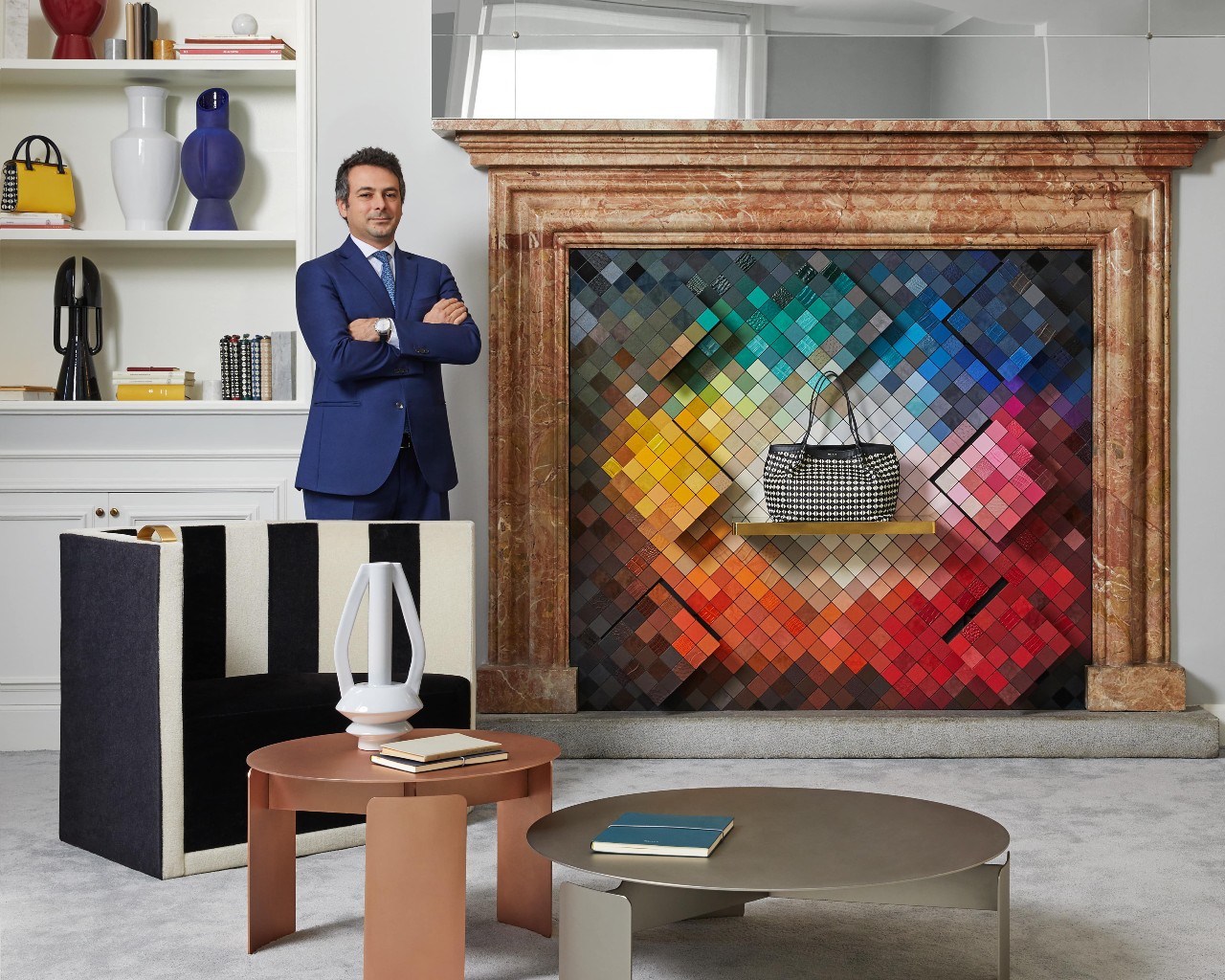
It was during one of these trips that he met Gina Flori, a dynamic and elegant woman with a refined taste for quality products. She would later become his wife and business partner. Serapian set up his Atelier on Via Jommelli in Milan, which became the hub of the Maison’s production. He would offer clients bespoke services allowing them to create unique bags using the highest quality leathers. After Stefano passed away in 1972, his wife and the rest of the family continued the family business honouring the legacy that he had built.
As the demand for customized products increased, Ardavast Serapian, Stefano’s son, further elevated the Maison’s exclusive bespoke service. From small leather goods to luggage, from practical totes to sailing bags, the atelier still transforms a dream into a finished product, using personalised colours, leathers, linings and hardware.

Stefano Serapian & Gina Flori
In 2017 Richemont acquired Serapian to begin a new chapter in its history. Now as the brand plans to expand into the Middle East, we meet Giovanni Nodari Serapian Head of Bespoke and Patrimony and third-generation member of the Serapian family to find out more.
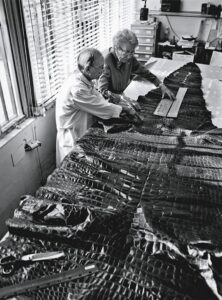
What makes Serapian’s designs so special?
An interesting story about our Maison is that many of our pieces came from bespoke services that were originally requested by our clients. The secret bag, for example, was designed in the seventies for a lady who arrived in the shop asking for something very large but light because she was a working woman who needed to carry a lot, and together with her, we developed the secret bag. It takes its name from the fact that she also wanted a secret pocket inside! The pocket is no longer there but this is where the name comes from. It is still a mystery as to what she wanted to keep inside it!
So behind every bag, there is a story. The founder, my Great, Great Uncle left us more than 800 historical pieces from the thirties which was quite amazing. He made more than 8,000 designs so there is so much that we have within the company already that we don’t need to create new designs as such, it’s more reinterpreting what has been done in the past and making that relevant for today with different proportions, colour combinations etc. What is interesting to know is that he and his wife would assemble and build the bags first, then once they reached the perfect shape, that’s when he designed it on paper, so he could remember what he did. So it’s the opposite process of what designers do usually. He had everything in his mind, and it was easy to build, and then the technical design came after.

When you’re coming up with new collections today do you look back through the archives?
Yes, we do for sure, specifically for the closures or ways to attach the handles as this was very specific. But, and this is my job today, we want as a family to stay in contact with our clients, and absorb everything that they want in the same way it has always been at the company. So part of the design process is about speaking to the people that visit the shop. This is why we also have bespoke services because it is the best way to understand the real needs of the client. After meeting the clients I pass all the information gathered to the design team so they can incorporate this into their collections.
But believe me, it’s very interesting because in a way all, of the clients are aligned. For example, in Dubai, I saw that there are some specific colours that a number of clients were choosing. So there are a lot of similarities between what clients are looking for which is very interesting, especially in different markets.
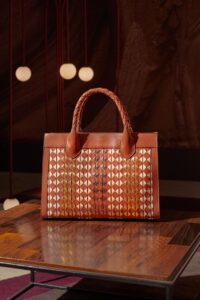
Tell us about the plan for Serapian in the UAE.
The plan is firstly to start presenting an exclusive collaboration that we have coming up with Ounass, which we will let you know more about in the future. And in parallel, we are planning to build on our very specific crowd of friends and supporters in order to be ready to open a point of sale in the next year.
With many brands, wherever you go, you see the same shops and creations around the world. After the pandemic, we are realising that people want something different. So even our approach in the market I the UAE needs to be different from others and we believe that with the story we have and the bespoke services that we can provide, could be an out-of-the-box approach. As we are offering something exclusive and timeless, even the way we approach it needs to be luxurious and exclusive. It’s about keeping a balance.

What do you think makes Serapian different from any other brands out there?
First of all the family is still very involved in the company and you can imagine that in a huge group like Richemont, this is a very unique case. The second thing is that thanks to the know-how and the way we work, we are the only ones at the moment that can provide all of the personalisation services in the way that we do. Then thirdly, Serapian has been kept as a secret of Milan and is still totally original. This is why we are now part of Richemont because we want to keep the Maison original, as it always has been because we are in a time when clients are looking for the real thing. So this is our approach and this is why Serapian is different. And of course, we have the Mosaico crafting which is very unique. Our collections are also very unique and it’s very important to understand that behind every creation there’s a story.
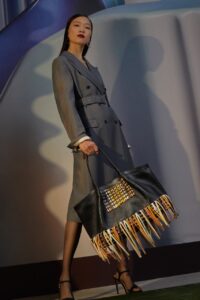
Tell about life growing up as part of the family behind Serapian and what do you remember from your childhood?
Even if we are a creative family who has always been working in the fashion and luxury business, it’s strange because both me and my uncle both studied economics in Milan – so nothing to do with fashion! But in Milan, even the fashion companies (of which there are very few truly Milanese companies), have a very industrial mindset. There is creativity for sure, but there is also a very industrial mindset. As a family, we have all been involved in the company since we were kids. I remember one time I was left alone in the shop for hours, but it wasn’t a problem because I was playing with the leathers. After four hours they came and found me there! You can imagine, when we had family lunches or dinners we were always talking about the leather, the clients and so on. The only moment when it was forbidden was Christmas time! But it was not a drag to talk about it because it’s really a passion. The founder, my Great Great Aunt was alive until eight years ago, so I had the chance to work with her directly and it was amazing. It was always a beautiful moment when she was asked to cut the alligator leather. She would stop everything in the company and call me to come and see. Because it’s really like cutting a diamond.
When I first graduated I started working in a pharmaceutical company in Switzerland as this was something I wanted to do and it was a good experience. Then I went to work with Dunhill before I joined the family company. For the first year, I worked in the factory, cutting the leather, stitching the bag, assembling the parts – but this is the only way to understand all the processes within the company. After a year, I started to work with my family and this is the way all the family members started, including the founder.
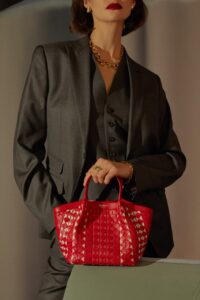
Serapian joined the Richemont Group four years ago – what has changed since then?
For sure it’s a big change coming from a family business to join a huge group. We are one of the smallest Maisons in the group but we are there because the Chairman wants to keep the brand original. So, in some ways of course we need to adjust, but on the other side, we are very free to express our identity because they want this to be kept in place.
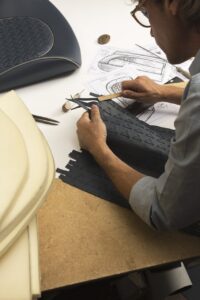
What are the biggest challenges that you face at the moment as a company?
Of course, the pandemic did not help us, but I have to say it gave us a lot to be thankful for and it gave us a chance to slow down. When you’re on the run constantly, sometimes you don’t have time to think, so that was a good opportunity for us. Now the challenge is to understand how the market will develop, but I believe so far it is going in the same direction that we had predicted. So it’s not a huge challenge, except that we need to select the right markets for us as a brand. We cannot be everywhere like other Maison’s because our clientele is a very cultured one, so if we don’t find that, we will not sell products. And we need to invest our time as the family did at the beginning – so staying in contact with the clients as much as possible. We need to find the right balance between being original, but still trying to propose our services in the right way.
How would you describe the brand in one word?
It’s two words: unique and unexpected.















